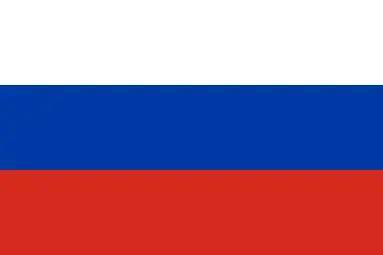What is YouTube SEO?
YouTube SEO is the optimization process that ensures your videos rank higher in YouTube search results. This involves applying strategies aligned with YouTube's algorithms and using specific techniques to help videos reach a larger audience.
YouTube is the world's second-largest search engine, with billions of people searching for videos daily. If your videos are not properly optimized, potential viewers may not find them. That’s why YouTube SEO strategies are essential for growing your channel and ensuring your videos reach a broader audience.
YouTube Keyword Research Tools
Keyword research is one of the most crucial aspects of YouTube SEO. By selecting the right keywords, you can increase your video’s ranking in search results and reach more viewers. Here are some of the most effective tools you can use:
1. Google Trends
Google Trends can be used not only for Google searches but also for YouTube searches. This tool shows how specific keywords trend over time and in which regions they are most searched. Creating videos on trending topics can bring additional views to your channel.
2. TubeBuddy
TubeBuddy is one of the most popular tools for optimizing YouTube channels. Its "Keyword Explorer" feature provides insights into:
3. VidIQ
VidIQ is another powerful tool for YouTube SEO. It helps analyze keywords, evaluate the performance of competitor videos, and improve your video optimization. The SEO Score feature helps measure your video’s level of optimization.
4. Ahrefs & SEMrush
Although primarily used for website SEO, these tools are also useful for YouTube keyword research. Ahrefs’ YouTube Keywords Explorer provides keyword search volume and competition levels. SEMrush helps track the search rankings of YouTube videos.
What Factors Affect YouTube SEO?
YouTube SEO involves various strategies and optimization techniques to improve video rankings on the platform. The YouTube algorithm analyzes user behavior to provide the best results. Optimizing your videos for SEO ensures they reach a wider audience.
Let’s explore the most important YouTube SEO factors:
1. Keyword Research and Proper Usage
Keywords are the phrases people use when searching. Using the right keywords can boost your videos in search results.
How to apply?
-
Use suggested keywords from YouTube’s search bar.
-
Analyze keyword competition and search volume with tools like TubeBuddy and VidIQ.
-
Include keywords in the title, description, and tags.
2. Optimized Video Title
The video title is the first thing users see. It should be both engaging and SEO-friendly.
How to create the best title?
-
Use keywords in the title (e.g., "How to Do YouTube SEO? | 2025 Strategies").
-
Keep it short and clear (under 60 characters).
-
Use attention-grabbing phrases to boost click-through rate ("Do You Want to Go Viral on YouTube?").
3. Video Description
The video description helps YouTube understand and properly index your video. It should include keywords, links, and a Call-to-Action (CTA).
How to write a good description?
-
The first two sentences should be engaging and SEO-friendly.
-
Explain the video topic in 300-500 words.
-
Add links to social media accounts and other related videos.
4. Tags & Hashtags
Tags help YouTube understand the content of your video and connect it to similar videos.
How to use tags?
-
Add 10-15 tags relevant to your main keywords.
-
Use both broad and specific keywords (e.g., "YouTube SEO," "SEO optimization," "video marketing").
-
Include hashtags in the description to increase discoverability (#YouTubeSEO, #VideoMarketing).
5. Thumbnail Design
One of the most important factors in increasing YouTube views is thumbnails.
How to design an effective thumbnail?
-
Use clear and readable text.
-
Choose bright colors and visually appealing elements.
-
Faces with expressions and high-contrast backgrounds attract more attention.
6. Subtitles & Transcriptions
YouTube uses subtitles and transcriptions to better understand video content.
Benefits:
7. Increasing Engagement (Engagement Factors)
The YouTube algorithm considers comments, likes, and shares when ranking videos. Higher engagement increases the chances of your video being recommended.
How to boost engagement?
-
Ask questions at the end of the video to encourage comments.
-
Remind viewers to like & subscribe ("If you enjoyed the video, don’t forget to subscribe!").
-
Include CTAs in the middle of the video ("What do you think about YouTube SEO in 2025? Share your thoughts in the comments!").
8. Video Length & Watch Time
The YouTube algorithm prioritizes watch time. Longer and engaging videos tend to rank higher.
How to increase watch time?
-
Capture attention in the first 10 seconds.
-
Divide the video into sections to maintain interest.
-
Use storytelling techniques to keep viewers engaged.
9. Playlists & Video Series
Playlists group related videos together, increasing watch time and keeping viewers on your channel.
What to do?
-
Organize videos into playlists based on topics.
-
Encourage viewers to watch another video at the end.
-
Add CTAs like: "Watch the next video in this series here!".
10. Using Analytics & YouTube Studio
YouTube Studio provides detailed analytics to evaluate video performance.
Key metrics to track:
-
Click-Through Rate (CTR) – Measures thumbnail & title effectiveness.
-
Watch Time – Shows how long viewers watch your video.
-
Comments & Likes – Important for boosting engagement.
Frequently Asked Questions about YouTube SEO
What is YouTube SEO and why is it important?
YouTube SEO includes optimization techniques to make your videos more discoverable to a larger audience.
How do I find the best keywords for my YouTube videos?
Use tools like TubeBuddy, VidIQ, and Google Trends to research keywords.
Why is thumbnail design important?
A compelling thumbnail increases click-through rate (CTR) and attracts more viewers.
How can I grow my subscriber count on YouTube?
Apply SEO strategies, upload videos consistently, and engage with your audience.
How can I increase my video’s watch time?
Create engaging introductions, smooth transitions, and an active presentation style to keep viewers watching.


.webp)




